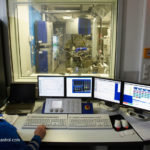Deep learning has revolutionized the field of artificial intelligence, and Convolutional Neural Networks (CNNs) stand out as one of the most powerful techniques within this domain. CNNs have had a profound impact on image recognition, computer vision, and various other applications that involve processing and analyzing visual data. In this article, we will delve into the concept of CNNs, explore their architecture, and discuss their key components and applications in the world of deep learning.
Understanding Convolutional Neural Networks (CNNs)
Convolutional Neural Networks (CNNs) are a class of deep neural networks specifically designed for processing structured grid-like data, such as images. CNNs are inspired by the visual cortex of the human brain and are capable of learning hierarchical representations of features in visual data through a series of convolutional and pooling layers.
Key Components of Convolutional Neural Networks
Convolutional Layers:
The core building blocks of CNNs are convolutional layers, which apply filters or kernels to the input image to extract features. These filters capture spatial patterns and edges within the image, allowing the network to learn hierarchical representations at different levels of abstraction.
Pooling Layers:
Pooling layers are used to downsample the feature maps generated by the convolutional layers. Common pooling operations include max pooling and average pooling, which help reduce the spatial dimensions of the input and make the network more robust to variations in the input data.
Activation Functions:
Activation functions introduce non-linearity into the CNN architecture, enabling the network to learn complex patterns and relationships within the data. Popular activation functions used in CNNs include ReLU (Rectified Linear Unit) and Sigmoid functions.
Fully Connected Layers:
Fully connected layers, also known as dense layers, are typically used towards the end of the CNN architecture to perform classification or regression tasks based on the features extracted by the preceding layers. These layers connect every neuron from the previous layer to the next layer, enabling the network to make high-level predictions.
Applications of Convolutional Neural Networks
Image Classification:
CNNs are widely used for image classification tasks, where they can accurately classify objects in images into predefined categories. Applications include facial recognition, object detection, and medical image analysis.
Object Detection:
CNNs excel at object detection tasks by localizing and identifying multiple objects within an image. This capability is crucial for applications such as self-driving cars, surveillance systems, and augmented reality.
Image Segmentation:
CNNs are employed for image segmentation tasks, where the goal is to assign a label to each pixel in an image. This is valuable in medical imaging, scene understanding, and satellite image analysis.
Convolutional Neural Networks (CNNs) represent a cornerstone of deep learning techniques, particularly in the realm of image processing and computer vision. Their ability to automatically extract relevant features from visual data and learn hierarchical representations has fueled breakthroughs in various applications, from image classification to object detection and segmentation. As AI technologies continue to evolve, CNNs will undoubtedly remain at the forefront of innovation, driving advancements in visual recognition systems and shaping the future of deep learning across diverse domains.












